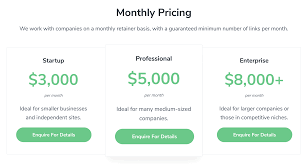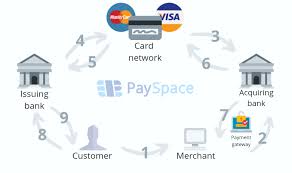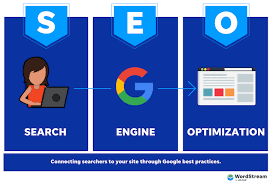SEO Rates: Understanding the Cost of Search Engine Optimization
In today’s digital landscape, having a strong online presence is crucial for businesses to thrive. Search Engine Optimization (SEO) plays a vital role in driving organic traffic to websites and improving their visibility on search engine results pages. However, one common question that arises when considering SEO services is, “What are the rates?”
The cost of SEO can vary significantly depending on various factors. It’s important to understand these factors to make an informed decision about investing in SEO services that align with your business goals and budget.
Scope of Work:
The first factor that affects SEO rates is the scope of work required. Each website has its unique needs and goals, and the level of optimization required may vary. Some websites may require a complete overhaul, while others may need minor tweaks. The more extensive the work required, the higher the cost.
Competition:
The level of competition in your industry also impacts SEO rates. If you operate in a highly competitive niche where many businesses are vying for top search rankings, it may require more effort and resources to outrank your competitors. This increased competition can influence pricing.
Target Keywords:
Keyword research is an essential aspect of SEO. The competitiveness and popularity of target keywords can affect pricing as well. Highly competitive keywords often require more time and effort to rank for, leading to higher costs.
Timeline:
The timeline for achieving desired results can also influence SEO rates. If you need quick results or have tight deadlines, it may require additional resources and efforts from the SEO agency or professional, potentially resulting in higher costs.
Experience and Expertise:
The experience and expertise of the SEO service provider play a significant role in determining rates. Established agencies or professionals with a proven track record may charge higher fees due to their expertise, industry knowledge, and ability to deliver results.
Additional Services:
SEO services often include additional offerings such as content creation, website optimization, link building, and analytics. The inclusion of these services can impact the overall cost. It’s essential to understand what services are included in the package and if they align with your business needs.
Return on Investment (ROI):
While SEO rates may seem like an expense, it’s crucial to consider the potential return on investment. A well-executed SEO strategy can lead to increased organic traffic, higher search rankings, and ultimately more conversions and revenue for your business. Understanding the long-term benefits can help justify the cost of SEO services.
When considering SEO rates, it’s important to remember that quality matters over quantity. Choosing a reputable SEO service provider who understands your business goals and employs ethical optimization techniques is crucial for long-term success.
In conclusion, SEO rates vary based on factors such as scope of work, competition, target keywords, timeline, experience of the service provider, additional services offered, and potential ROI. By carefully evaluating these factors and working with a trusted SEO professional or agency, you can make an informed decision that aligns with your budget and helps you achieve your online goals.
6 Essential Tips to Improve Your SEO Rates
- Monitor changes in search engine algorithms and adjust your SEO strategy accordingly.
- Identify the most relevant keywords for your website and optimize your content around those terms.
- Utilize social media to increase visibility and create links back to your website.
- Regularly update content on your website, including blog posts, videos, and images to keep visitors engaged and improve SEO rankings.
- Take advantage of local SEO tactics including optimizing local business listings and creating location-specific pages on your website for better visibility in local searches.
- Make sure that all pages are optimized for mobile devices as more people are now using their phones to search online than ever before
Monitor changes in search engine algorithms and adjust your SEO strategy accordingly.
Staying Ahead of the Game: Monitoring Search Engine Algorithm Changes for Effective SEO Strategy
Search engine algorithms are constantly evolving, and keeping up with these changes is crucial for maintaining a successful SEO strategy. As a website owner or digital marketer, it’s essential to monitor these algorithm updates and adjust your SEO tactics accordingly to stay ahead of the competition.
Search engines, such as Google, regularly update their algorithms to enhance user experience and provide more relevant search results. These updates can have a significant impact on your website’s visibility and rankings. By staying informed about algorithm changes, you can adapt your SEO strategy to align with the latest best practices.
One key aspect of monitoring algorithm changes is understanding the factors that search engines prioritize. For example, Google has placed increasing importance on user experience metrics like page speed, mobile-friendliness, and secure browsing. By staying aware of such shifts in priorities, you can optimize your website accordingly and ensure it meets the latest standards.
Regularly checking industry news sources, forums, and official search engine announcements is vital for staying informed about algorithm updates. These sources often provide insights into the specific changes made and how they might impact your website’s performance. Additionally, following reputable SEO blogs or subscribing to newsletters can help you stay up-to-date with the latest trends and strategies.
Once you’re aware of an algorithm change, it’s important not to panic or make knee-jerk reactions. Take the time to analyze how the update may affect your website specifically. Look at your current rankings, traffic patterns, and user engagement metrics before making any adjustments.
When adjusting your SEO strategy in response to algorithm changes, focus on providing value to users rather than trying to game the system. Search engines prioritize websites that offer high-quality content that meets users’ needs. Ensure that your content is relevant, informative, and engaging for visitors.
Regularly monitoring algorithm changes also allows you to identify potential issues or penalties that may arise due to outdated or unethical SEO practices. By staying proactive, you can address any issues promptly and prevent long-term damage to your website’s rankings.
Remember, SEO is an ongoing process, and adapting to algorithm changes is a crucial part of that process. By staying vigilant and adjusting your strategy accordingly, you can maintain a strong online presence, improve your website’s visibility, and ultimately drive more organic traffic.
In conclusion, monitoring changes in search engine algorithms is essential for maintaining an effective SEO strategy. By staying informed about updates, understanding the shifting priorities of search engines, and adjusting your tactics accordingly, you can stay ahead of the game and ensure that your website continues to rank well in search results. Embrace these changes as opportunities for growth rather than obstacles, and you’ll be on the path to SEO success.
Identify the most relevant keywords for your website and optimize your content around those terms.
Boost Your SEO Rates: Optimize Your Content with Relevant Keywords
When it comes to improving your website’s search engine optimization (SEO) rates, one effective tip is to identify the most relevant keywords for your website and optimize your content around those terms. Keywords are the words or phrases that users type into search engines when looking for information or products related to your business. By strategically incorporating these keywords into your website content, you can increase its visibility and attract more organic traffic.
The first step in this process is keyword research. Start by brainstorming a list of words or phrases that are relevant to your business, products, or services. Put yourself in the shoes of your target audience and think about what they might search for when looking for businesses like yours. You can also use keyword research tools like Google Keyword Planner, SEMrush, or Moz Keyword Explorer to discover popular keywords in your industry.
Once you have a list of potential keywords, it’s important to choose the most relevant ones for each page of your website. Consider the search volume and competition level for each keyword. High search volume indicates that many people are searching for that term, but it also means more competition. On the other hand, low-competition keywords may be easier to rank for but may have lower search volumes. Striking a balance between relevance and competition is key.
After selecting the most appropriate keywords, incorporate them naturally into your website content. Avoid “keyword stuffing,” which refers to overusing keywords in an unnatural way that detracts from the readability and quality of your content. Instead, focus on creating high-quality, informative content that genuinely addresses the needs and interests of your target audience while strategically placing relevant keywords throughout.
Optimizing your content with relevant keywords not only helps search engines understand what your website is about but also improves its chances of appearing higher in search engine results pages (SERPs). When users find valuable information related to their search queries on your website, they are more likely to stay longer, explore other pages, and potentially convert into customers.
Remember that SEO is an ongoing process. Regularly monitor your website’s performance using tools like Google Analytics to track keyword rankings, organic traffic, and user behavior. This data will provide insights into which keywords are driving the most traffic and conversions, allowing you to fine-tune your SEO strategy accordingly.
In conclusion, identifying the most relevant keywords for your website and optimizing your content around those terms is a powerful way to boost your SEO rates. By understanding what your target audience is searching for and providing valuable information through optimized content, you can increase your website’s visibility, attract more organic traffic, and ultimately improve your chances of success in the digital landscape.
Utilize social media to increase visibility and create links back to your website.
Utilize Social Media to Boost Visibility and Enhance SEO Rates
In the digital age, social media has become an integral part of our daily lives. From connecting with friends to discovering new trends, social media platforms have immense potential for businesses to increase their visibility and drive traffic to their websites. When it comes to SEO rates, leveraging social media can be a game-changer.
Social media platforms provide an excellent opportunity to showcase your brand, products, and services to a vast audience. By creating compelling and shareable content, you can engage with your target audience and encourage them to visit your website. This increased traffic not only boosts your visibility but also positively impacts your SEO rates.
One of the key benefits of utilizing social media for SEO is the ability to create backlinks. Backlinks are links from other websites that point back to your site. Search engines view backlinks as a vote of confidence in your website’s credibility and relevance. The more high-quality backlinks you have, the higher your website is likely to rank in search engine results pages.
When you share content on social media platforms, it increases the chances of others sharing it as well. This sharing activity generates more opportunities for people to discover and link back to your website. Additionally, by actively engaging with industry influencers and thought leaders on social media, you can forge valuable connections that may lead to collaborative content creation or guest blogging opportunities – both of which can result in valuable backlinks.
To maximize the impact of social media on SEO rates, here are a few tips:
- Consistent Branding: Maintain a consistent brand presence across all social media platforms by using consistent logos, colors, and messaging. This helps create a cohesive brand image and makes it easier for users to identify and engage with your content.
- Share Engaging Content: Create high-quality content that is relevant, informative, entertaining, or inspiring for your target audience. Encourage sharing by incorporating visually appealing images, videos, and infographics that resonate with your followers.
- Encourage Social Sharing: Make it easy for users to share your content by incorporating social sharing buttons on your website and blog posts. This allows visitors to instantly share your content with their networks, increasing its reach and potential for backlinks.
- Engage with Your Audience: Actively engage with your followers by responding to comments, answering questions, and participating in relevant discussions. This helps build a loyal community around your brand and encourages organic sharing.
- Collaborate with Influencers: Identify influencers in your industry who have a significant following and engage with them. Collaborate on content or seek their endorsement to increase visibility and gain valuable backlinks.
Remember, social media is not just about self-promotion; it’s about building meaningful relationships and providing value to your audience. By utilizing social media effectively, you can increase visibility, drive traffic to your website, and create valuable backlinks that contribute to improving your overall SEO rates.
Regularly update content on your website, including blog posts, videos, and images to keep visitors engaged and improve SEO rankings.
Boost Your SEO Rankings with Regularly Updated Content
When it comes to improving your website’s search engine optimization (SEO) rankings, one effective tip that should not be overlooked is regularly updating your content. By consistently adding fresh and relevant content to your website, such as blog posts, videos, and images, you can not only keep visitors engaged but also enhance your chances of ranking higher in search engine results.
Search engines like Google value websites that provide valuable and up-to-date information to users. By regularly updating your content, you signal to search engines that your website is active and relevant. This can lead to improved visibility and higher rankings in search results.
One way to keep visitors engaged is through blog posts. By publishing informative articles related to your industry or niche, you can demonstrate your expertise and provide valuable insights to readers. Additionally, blog posts allow you to incorporate target keywords naturally, which can further optimize your website for relevant searches.
Videos have become increasingly popular in recent years, and incorporating them into your website can have a positive impact on SEO. Videos not only engage visitors but also increase the time they spend on your site. Search engines take into account user behavior metrics like bounce rate and time spent on site when determining rankings. By keeping visitors on your site longer with engaging videos, you send positive signals to search engines about the quality of your content.
Images also play a crucial role in user engagement and SEO. High-quality images that are relevant to your content can make it more visually appealing and shareable on social media platforms. Additionally, optimizing image file names and alt tags with descriptive keywords helps search engines understand what the image is about and improves its chances of being indexed correctly.
Regularly updating content does not mean simply adding new pages or posts for the sake of it; quality matters too. Ensure that any new content you create is well-researched, informative, and provides value to your audience. Aim for consistency in terms of posting frequency, whether it’s weekly, biweekly, or monthly, to maintain a steady flow of fresh content.
In conclusion, regularly updating your website’s content is a simple yet effective strategy to improve SEO rankings. By keeping visitors engaged with fresh blog posts, engaging videos, and visually appealing images, you can increase your chances of ranking higher in search engine results. Remember to create high-quality and valuable content that resonates with your target audience. So start updating your website regularly and watch as your SEO rankings soar.
Take advantage of local SEO tactics including optimizing local business listings and creating location-specific pages on your website for better visibility in local searches.
Boost Your Business with Local SEO Tactics
In today’s digital age, local search engine optimization (SEO) has become an essential strategy for businesses looking to attract customers in their specific geographic area. By optimizing your website and online presence for local searches, you can increase your visibility to potential customers who are actively seeking products or services in your locality. One effective tip to improve your local SEO is to take advantage of local SEO tactics, such as optimizing local business listings and creating location-specific pages on your website.
Local business listings are online directories that list information about businesses in a particular area. Examples include Google My Business, Yelp, and Bing Places. Optimizing these listings involves providing accurate and up-to-date information about your business, including your address, phone number, website URL, working hours, and a brief description of your products or services. By ensuring consistency across all platforms and regularly updating these listings, you can improve your chances of appearing in local search results.
Creating location-specific pages on your website is another effective local SEO tactic. These pages should provide valuable information about the areas you serve, highlighting any unique aspects or offerings related to each location. Include relevant keywords specific to the region throughout the page’s content and meta tags. This helps search engines understand that your business is relevant to those specific locations and improves the likelihood of appearing in local search results.
Additionally, consider incorporating customer reviews on these location-specific pages. Positive reviews from satisfied customers can boost credibility and encourage potential customers to choose your business over competitors.
Remember that mobile optimization is crucial for local SEO success since many people use their smartphones when searching for nearby businesses. Ensure that your website is mobile-friendly with fast loading times and easy navigation.
By implementing these local SEO tactics, you can increase the visibility of your business within your target area. This means a higher likelihood of attracting potential customers who are actively searching for products or services like yours locally.
Investing time and effort into local SEO is a smart move for any business looking to grow its customer base within a specific region. By optimizing your local business listings, creating location-specific pages on your website, and focusing on mobile optimization, you can improve your visibility in local searches and ultimately drive more traffic and customers to your business. Start implementing these tactics today and watch your online presence soar in local search results.
Make sure that all pages are optimized for mobile devices as more people are now using their phones to search online than ever before
Optimizing Your Website for Mobile Devices: A Crucial Step for SEO Success
In today’s digital age, mobile devices have become an integral part of our lives. More and more people are using their smartphones and tablets to browse the internet, find information, and make online purchases. As a result, search engines like Google have placed significant emphasis on mobile-friendly websites in their ranking algorithms. If you want to improve your SEO rates and stay ahead of the competition, optimizing your website for mobile devices is no longer optional – it’s a necessity.
Why is mobile optimization crucial for SEO success? Let’s take a closer look.
Changing User Behavior:
The way people access the internet has evolved dramatically over the years. Mobile devices have surpassed desktop computers as the primary means of online search. Users now expect websites to be responsive and easily accessible on their phones or tablets. If your website isn’t optimized for mobile devices, you risk losing potential visitors and customers.
Improved User Experience:
User experience (UX) is a key factor in SEO rankings. When users visit your website on their mobile devices, they expect fast loading times, easy navigation, and content that fits perfectly on their screens. A well-optimized mobile website provides a seamless browsing experience, keeping visitors engaged and encouraging them to explore further.
Higher Search Rankings:
Search engines prioritize mobile-friendly websites in their search results pages. Google has even implemented mobile-first indexing, meaning it primarily uses the mobile version of a website for indexing and ranking purposes. By optimizing your site for mobile devices, you increase your chances of ranking higher in search engine results pages (SERPs), ultimately driving more organic traffic to your site.
Reduced Bounce Rates:
If users land on your website through a search engine but find it difficult to navigate or read due to poor mobile optimization, they are likely to leave immediately, resulting in a high bounce rate. Search engines interpret high bounce rates as a signal that your website may not be providing a satisfactory user experience. This can negatively impact your SEO rankings. Optimizing for mobile devices helps keep bounce rates low and encourages users to stay longer on your site.
Stay Ahead of the Competition:
In today’s competitive online landscape, staying ahead of the competition is crucial. By optimizing your website for mobile devices, you give yourself an advantage over competitors who have neglected this aspect of SEO. Providing a seamless mobile experience not only attracts more visitors but also enhances your brand reputation and credibility.
In conclusion, optimizing your website for mobile devices is no longer just a recommendation – it’s an essential step in achieving SEO success. By adapting to changing user behavior, improving user experience, boosting search rankings, reducing bounce rates, and staying ahead of the competition, you set yourself up for long-term growth and success in the digital realm. So, don’t overlook the importance of mobile optimization – it’s a small change that can yield significant results for your online presence.




